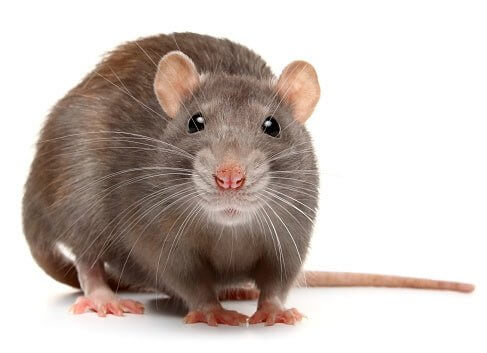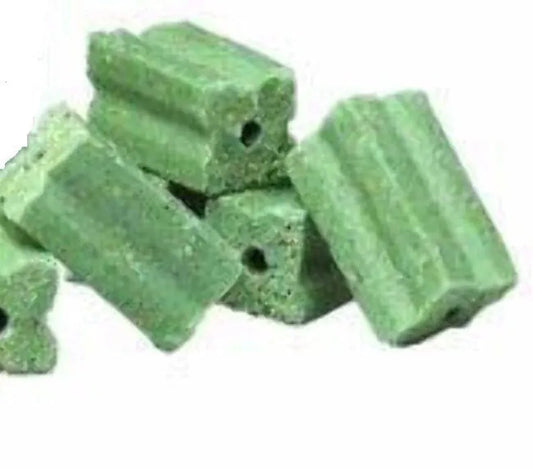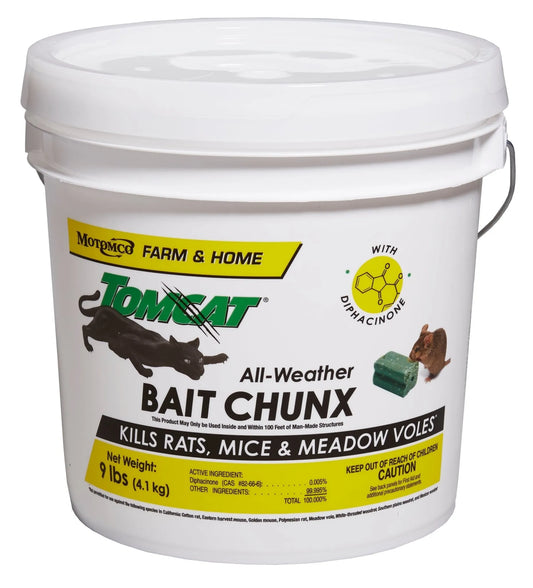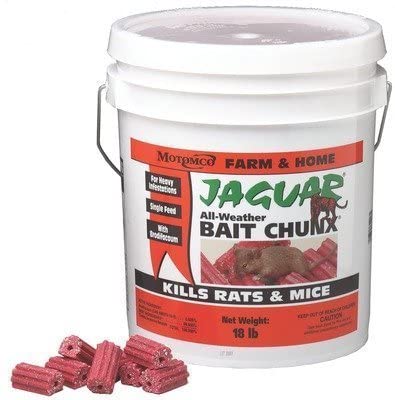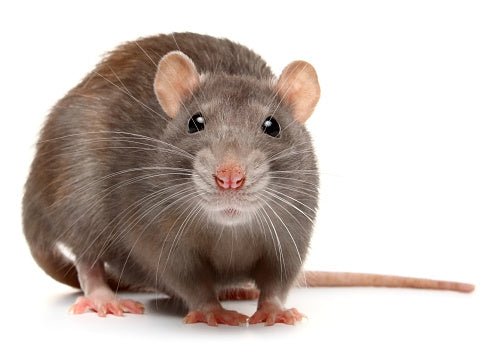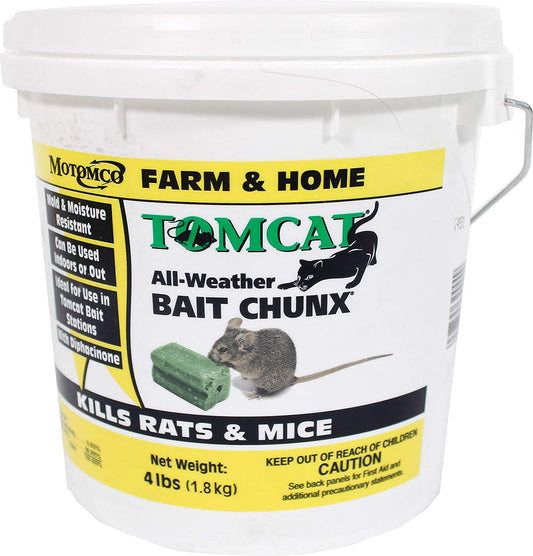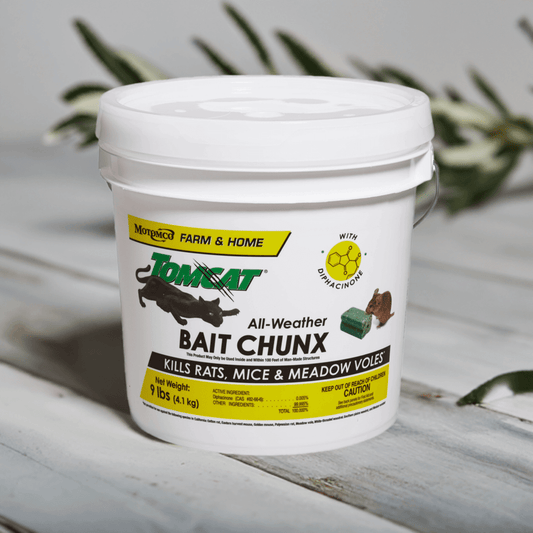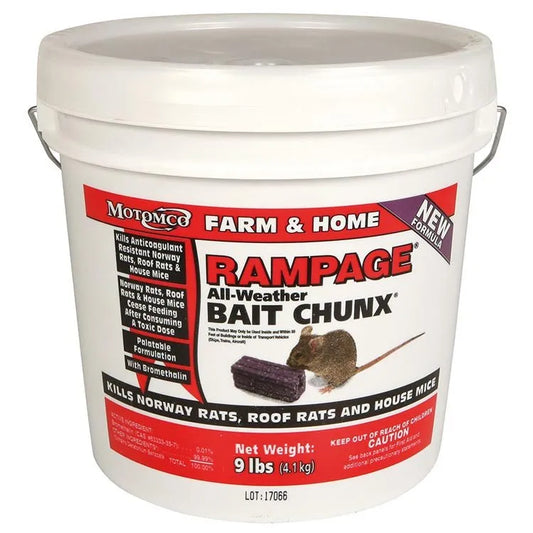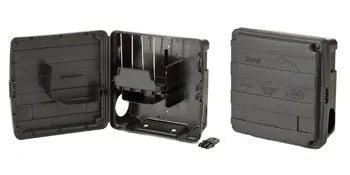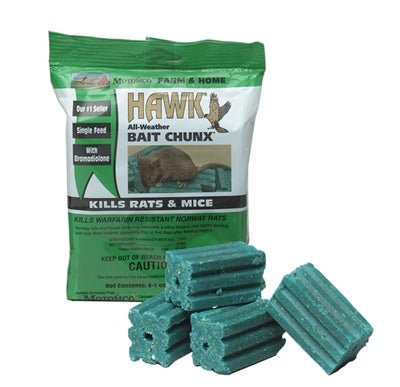-
Motomco Tomcat All Weather Bait Chunx rat mice rodent 4.1 kg
Proveedor:MotomcoPrecio habitual $129.00 CADPrecio habitualPrecio unitario por -
Hawk All-Weather Bait Chunx 9lb/4.1kg
Proveedor:MotomcoPrecio habitual $199.00 CADPrecio habitualPrecio unitario por -
Tomcat rat bait chunx 9lbs/4.1kg
Proveedor:rodenticidecanada.comPrecio habitual $129.00 CADPrecio habitualPrecio unitario por -
Motomco Jaguar Mice Rat Bait blocks 4.1kg/9lbs
Proveedor:MotomcoPrecio habitual $199.00 CADPrecio habitualPrecio unitario por -
Tomcat All-Weather Bait Chunx 9lb/4.1kg
Proveedor:MotomcoPrecio habitual $139.00 CADPrecio habitualPrecio unitario por -
Jaguar Mouse and Rat Bait Chunx, 9-Pounds / 4.1kg
Proveedor:MotomcoPrecio habitual $199.00 CADPrecio habitualPrecio unitario por -
Motomco Hawk Soft Bait 0.8kg
Proveedor:MotomcoPrecio habitual $39.00 CADPrecio habitualPrecio unitario por -
All Weather Tomcat Bait Chunx Rat Mice Rodent Blocks 18lb/8.2kg
Proveedor:MotomcoPrecio habitual $339.00 CADPrecio habitualPrecio unitario por -
Hawk bait chunk 4.1kg/9lbs
Proveedor:rodenticidecanada.comPrecio habitual $199.00 CADPrecio habitualPrecio unitario por -
Motomco Rodent Tomcat All Weather 18lb/8.2kg Valuepack
Proveedor:Motomco LTDPrecio habitual $339.00 CADPrecio habitualPrecio unitario por -
Boothill Mini Blocks Bait 1.2kg
Proveedor:BoothillPrecio habitual $79.00 CADPrecio habitualPrecio unitario por -
Motomco All Weather Bait Chunx 9lbs/4.1kg
Proveedor:TomcatPrecio habitual $129.00 CADPrecio habitualPrecio unitario por -
Rampage bait blox
Proveedor:RampagePrecio habitual $229.00 CADPrecio habitualPrecio unitario por -
Rampage Chunx
Proveedor:MotomcoPrecio habitual $209.00 CADPrecio habitualPrecio unitario por -
Jaguar Bait Chunx
Proveedor:MotomcoPrecio habitual A partir de $71.93 CADPrecio habitualPrecio unitario por -
Boothill mini block 5kg pail
Proveedor:BoothillPrecio habitual $199.00 CADPrecio habitualPrecio unitario por$179.00 CADPrecio de oferta $199.00 CAD -
TOMCAT Vertical Rodent Rat Mice Bait Station
Proveedor:TomcatPrecio habitual $19.00 CADPrecio habitualPrecio unitario por -
FastDraw Soft bait paste 3.5kg
Proveedor:FastdrawPrecio habitual $259.00 CADPrecio habitualPrecio unitario por -
Mini blocks rat pellets place packs 2.5kg
Proveedor:HombrePrecio habitual $119.00 CADPrecio habitualPrecio unitario por -
Hawk All Weather Bait Chunks 9lbs/4.1kg
Proveedor:MotomcoPrecio habitual $199.00 CADPrecio habitualPrecio unitario por -
Ratak Rodenticide rat and mice pellets Gardex Chemicals
Proveedor:ratakPrecio habitual $89.00 CADPrecio habitualPrecio unitario por -
FastDraw soft bait pail 7kg
Proveedor:FastDrawPrecio habitual $499.00 CADPrecio habitualPrecio unitario por -
Jaguar Place Pac
Proveedor:MotomcoPrecio habitual A partir de $96.00 CADPrecio habitualPrecio unitario por
How to use rodenticides in Canada
Here are general guidelines for using rodenticides with bait stations and traps in Canada:
Choose the right product: Select a rodenticide that is approved for use in Canada and appropriate for the type of rodents you want to control. Make sure to read the product label carefully and follow all instructions.
Use bait stations: Bait stations are recommended for use with rodenticides as they protect the bait from being accessed by non-target animals, including children and pets. Place the bait stations in areas where rodents are active, typically along walls, behind appliances or in areas where food or shelter may be found.
Place the bait: Place the rodenticide in the bait station as directed on the product label. It is important to use gloves when handling rodenticide to avoid contact with skin, and to avoid inhaling or ingesting the substance.
Check and replace bait: Check the bait stations regularly to ensure that they are still secure and that the bait has not been depleted. Replace the bait as needed.
Use traps: Traps can be an effective method of controlling rodents, especially in areas where the use of rodenticides is not appropriate. Place traps in areas where rodents are active, such as near burrows, along walls or in dark corners. Follow the instructions for baiting and setting the traps.
Dispose of dead rodents: When a trap catches a rodent, it is essential to dispose of the carcass safely and properly to avoid contamination and disease spread. Wear gloves and use a plastic bag to pick up the dead rodent, then dispose of it in a sealed container or by following your municipality's disposal instructions.
Remember, rodenticides can be harmful to humans and animals if not used correctly. Always read and follow the instructions on the product label, and take precautions to protect yourself and others from accidental exposure.
